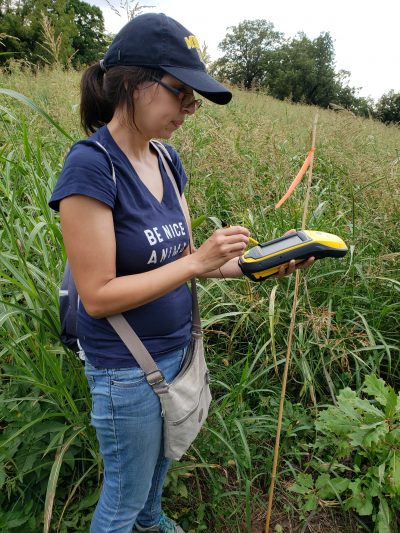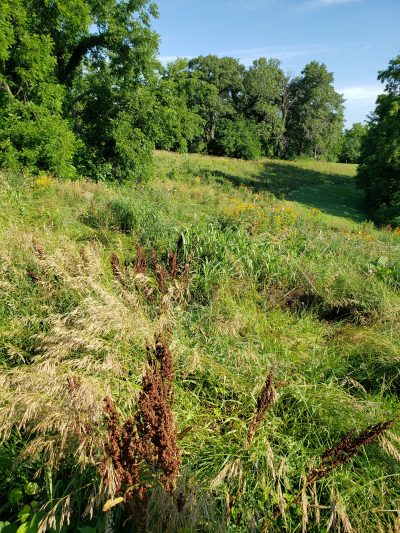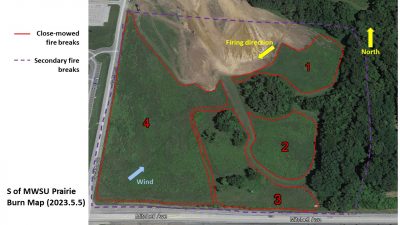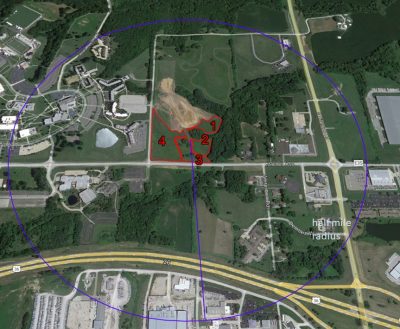John Rushin Teaching and Research Prairie
Established in 2020
UPCOMING PRESCRIBED BURN
Missouri Western will be conducting a prescribed burn on the Cross Country Course at 50th and Mitchell, on the east side of campus just south of the John Rushin Teaching and Research Prairie. To avoid any possible discomfort from the smoke, it is advised that nearby residents close their windows during the burn. People who are particularly sensitive to smoke are advised to remain indoors during the burn.
WHEN
The timing of the burn depends on weather conditions. Tentative dates include:
- May 20-25
- May 30-June 11
DURATION
Burn will take a few hours, but could take longer depending on weather conditions.
WHY
Prescribed burns help maintain the health of prairie land to ensure the utility of the land for research and applied learning. See our FAQs below for more information about prescribed burns.
Prairie Burn FAQ
“Prescribed fire or controlled burning is an affordable and effective management tool to accomplish land management goals including reducing fuel loads to reduce the intensity and chance of wildfire, restoring native plant communities, enhancing wildlife habitat, improving livestock forage production, regenerating merchantable trees, and controlling invasive species. The responsible use of fire can benefit the people and resources of Missouri.” – https://moprescribedfire.org/
“A prescribed fire is a planned fire intentionally ignited by park managers to meet management objectives.
A wildfire is an unplanned fire caused by lightning or other natural causes, by accidental (or arson-caused) human ignitions, or by an escaped prescribed fire.” – https://www.nps.gov/orgs/1965/wildfires-prescribed-fires-fuels.htm
Prescribed fires are specifically planned out and controlled by professionals that are highly trained in this area of conservation. Weather conditions are closely monitored, and when properly executed, the risk to surrounding people, buildings, and wildlife is minimal.
The goals of Missouri Western’s prescribed burn include clearing accumulated ground litter to prepare for spring herbicide application, stimulation of broadleaf species and wildflowers, killing of invading shrubs, and removal of debris.
No, for safety reasons, it is best to perform prescribed burns with only trained individuals onsite.


History of the Prairie
When Missouri Western’s 2015 Master Plan was being developed, biology student Brock Couch discovered a plot of land in the plan that was being underutilized. “I was thinking, we’re always driving to do research,” recalled Brock, who now holds a doctorate in Science Education. “We have ground right here we can do stuff on.”
Seeing firsthand the need for on-campus applied learning opportunities for biology students, he suggested to one of his professors, Dr. Mark Mills, that the underdeveloped land be used for biology research. Dr. Mills agreed. Brock put together a group of students and pitched the idea during a town hall meeting. The committee valued his idea and input, and the prairie was added to the Master Plan.
The plot of land chosen for the 40-acre prairie addition was located near 50th and Messanie on the east side of campus. Partnering with the Missouri Department of Conservation and their private land conservationist, Jeff Powelson, plans began to form for the re-establishment of native prairie land.
In early 2020, the Missouri Department of Conservation planted more than 100 types of seeds in the prairie land, and the Missouri Western Chapter of the Wildlife Society followed suit with native trees.
A special dedication was held in October 2020. The John Rushin Teaching and Research Prairie was named in honor of a former Missouri Western biology professor, Dr. John Rushin. Rushin taught at Missouri Western for more than three decades and was instrumental in building the wildlife conservation program.
The first prescribed burn of the prairie land was conducted in spring 2023. This burn ensures the health of the prairie.


